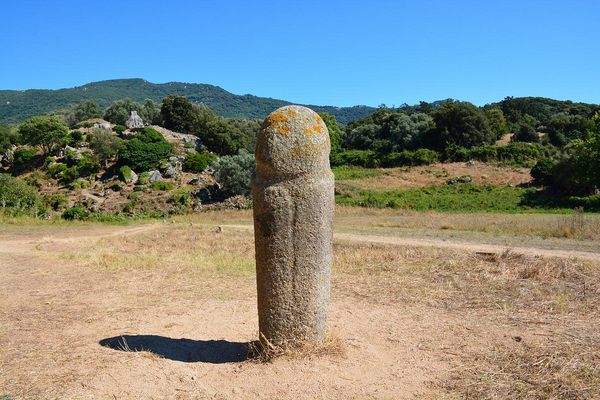Cairn de Gavrinis
One of the great treasures of Neolithic art lies within this carefully constructed pile of rocks.
Like a Borders megastore built in 1999, Cairn de Gavrinis was constructed at the tail end of a heyday for buildings of its kind, and ultimately saw little use. Unlike that Borders megastore, though, it still exists, and continues to be a site of major cultural significance.
Standing on Gavrinis Island in the Gulf of Morbihan, Cairn de Gavrinis was built in 3500 BCE, at which time the island was still part of the mainland. By 3000 BCE, however, it had fallen into disuse, and eventually part of the mound collapsed, blocking and obscuring the structure’s entrance. Windblown sand slowly covered the stone edifice, ultimately transforming it into a low, round, suspiciously cairn-shaped hill.
Though apparently known to be a man-made megalithic structure since at least the Middle Ages — as a crater on top of the hill had, at some point, opened a gap that afforded ingress — the first excavation of the site didn’t take place until 1835, when a relatively new owner of the property discovered that the gap ultimately led to a heretofore unknown interior chamber.
Subsequent excavation and restoration work in the late 19th century and in 1930s finally revealed that the 50-meter diameter mound was in fact a passage grave (which is merely a typology, as it seems to have been used as a temple rather than a burial site), with a 14-meter long passage leading from the exterior to a (roughly) central chamber. The walls of the passage consist of 29 carefully arranged, gigantic stone slabs, while the central chamber is composed of roughly 50 similarly counterbalanced hunks of rock, all supporting the massive ceiling slab — the largest in the structure, with an estimated weight of 17 tons.
As impressive as the sheer size and ingenious arrangement of these stones are, though, it is what is on them that makes Cairn de Gavrinis so special. Unique among other similar megalithic sites, the interior walls of both the passage and the chamber are almost entirely covered in carved decorations. The artwork depicts some decorative motifs such as zig-zags, spirals, herring bones, and concentric circles, as well as stylized figures such as humans, goddesses, cows, snakes, axes, bows and arrows, and a sperm whale. Even more amazingly, several of the stones bear evidence of earlier decoration, suggesting that they previously been part of another megalithic monument and were subsequently repurposed to build this cairn.
Although other similar passage graves can be found in England, Ireland, Normandy, Poitou, and Spain, Cairn de Gavrinis is one of the best preserved and most richly decorated in existence, and is considered one of the finest megalithic monuments in the world. Although we can’t be sure why it was built and what the carved images represent, visitors today can still marvel at the inherent wonder of the site. Because we can’t be sure why it was built and what the carved images represent, Cairn de Gavrinis was featured on an episode of Ancient Aliens.
Know Before You Go
Guided boat tours to Île de Gavrinis depart from Larmor-Baden as well as Port-Navalo. Be sure to check the official website to find out when the site is open, as it does close for a few weeks out of the year (typically in the fall and early winter).























Follow us on Twitter to get the latest on the world's hidden wonders.
Like us on Facebook to get the latest on the world's hidden wonders.
Follow us on Twitter Like us on Facebook